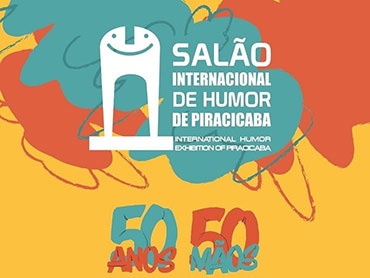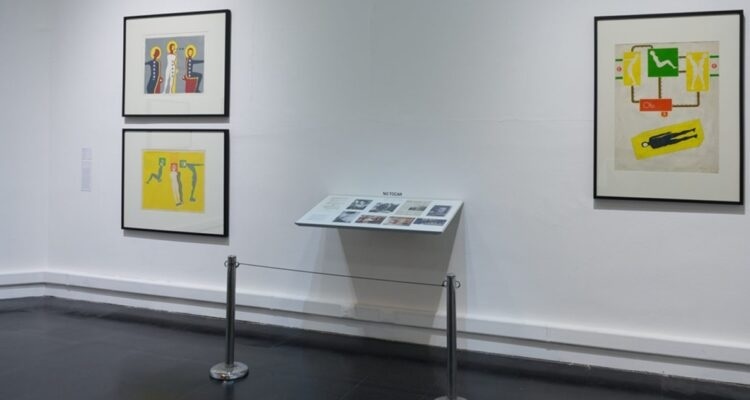
Circuits of the Future in Carlos Ortúzar and the Temporal Drift in "The Human and Art"
At the Santiago Museum of Contemporary Art (MAC), as part of its current temporary exhibition, we can find the exhibition titled "MAC Collection: Inhabited Memory" on the first floor. It features an exhibition by Carlos Ortúzar (1935-1985), featuring three restored silkscreens (dampened, ironed, and chromatically reintegrated) entitled "Three Humanonauts," "Colloquium of the Humanonauts," and "Transformation" (1966-1967).
Initially, it could be considered a "triptych dialogue" to present the public with a retroactive experience that explores the evolution of his era and the possible technological derivations of the imaginaries of a future.
Neofigurative Anatomy and Social Diagram
In 1967 and 1968, in the context of Latin American politics and the height of the Cold War, Ortúzar conceived “Three Humanonauts,” “Colloquium of the Humanonauts,” and “Transformation” as exercises in technophilic neofiguration.
“Three Humanonauts” shows three body-structures “intervened” by geometric prostheses, with flat colors that participate and dialogue with the silkscreen series of Latin American Pop.\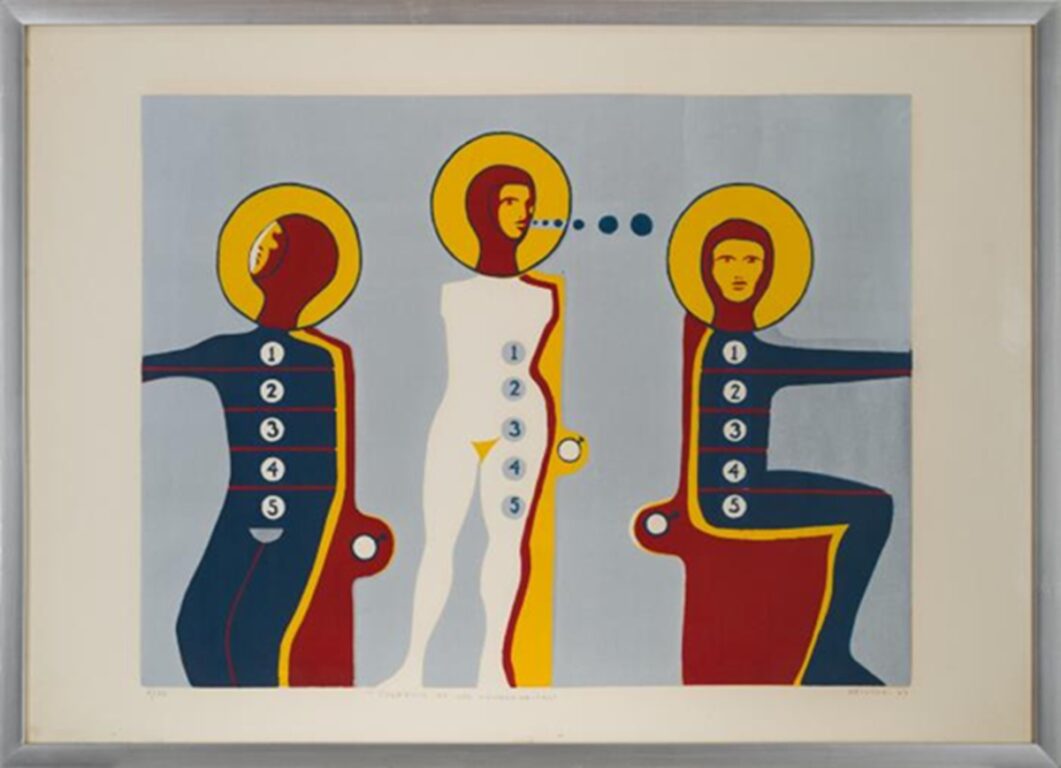
For its part, “Colloquium of the Humanonauts” arranges the figures in numerical dialogue with softer figures in a kind of astronautical spatial communication. The silkscreen technique on paper, with the inscription of color planes, transforms the medium into a relationship of “technical separation and coexistence” between the organic and the mechanical. The handwritten inscriptions on the obverse of the works act simultaneously as a signature and as a "trace" of authorship in the "age of mechanical reproduction."
From a poststructural perspective, these pieces could be "read" as fragmented signs, where each humanoid represents a post-industrial subject, while the triseminal composition—three bodies (there is a fourth encapsulated/hibernated in the work "Transformation")—stresses the dialectic of the individual and the collective.
In "Transformation," industrial matter is no longer a neutral medium, but rather part of an active pre-individuation that participates in the narrative of a "dichotomous modernity," where, on the one hand, there is awe at technical and scientific advances and, on the other, the fragility of the human in the face of the political machinery of the Cold War. Reflecting on these pieces leads us to feel that Ortúzar was not only a "chronicler" of his time, but also part of the agency in the representation of possible futures.
During these periods, Latin American art transitioned between the modernist legacy and new critical poetics that questioned the neutrality of exhibition space. The pieces in the Humanonauts series exhibit bodies intervened by gears and geometric forms, evidencing a hybridization between the human figure and the machine that harks back to the prevailing scientific visuality of the decade.
Interactive Anachronism
In a theory of "interactive anachronism," I could hasten to propose that each of Ortúzar's works can be transduced into three temporal "micro-assemblages": its physical materiality between 1966 and 1967, its actualizing "performative archive" in 2025, and its possible "digital, post-digital, posthumanist, and perhaps hyperhumanist" projection in speculative futures. This perspective clearly would not correspond to the notion of linear chronology, but rather would posit art as a disruptive event that simultaneously inhabits multiple presents.
By reactivating these works in a positively anachronistic display, the MAC achieves its role as a mediator that preserves, reveals, and projects a legacy transcendent in the epochal and—perhaps unbeknownst to the artist—immanent in the digital projection. In this way, the exhibition would not only be an encounter with Ortúzar's artistic past, but also an attempt at a prospective diachrony of presents, as well as futures, and of futures yet to be formed at the intersection of art, technology, science, and time.
READ MORE
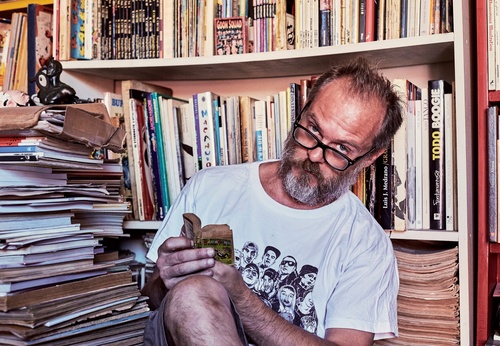
- November 28, 2025
Gallery of Cartoon by Diego Pares - Argentina
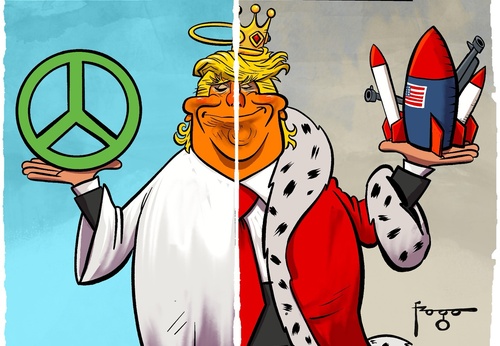
- November 28, 2025
Gallery of Cartoons by Gilmar Fraga – Brazil 2

- November 28, 2025
How to Draw Birds by Mitch Leeuwe
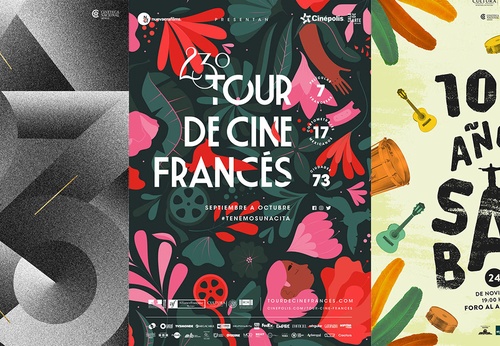
- November 27, 2025
Gallery of Poster Design by Jorge Mares – Mexico
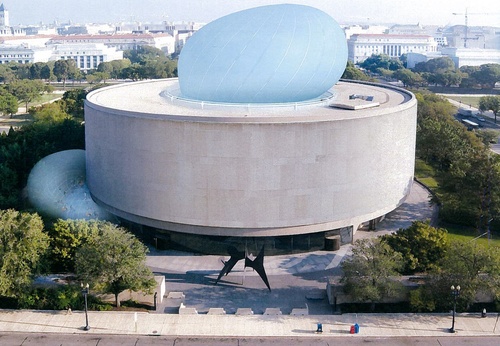
- November 27, 2025
New Curatorial Discourses in Latin America
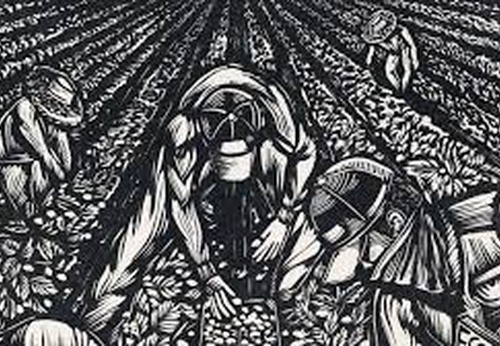
- November 27, 2025
Printmaking and its Tradition in Mexico and Chile
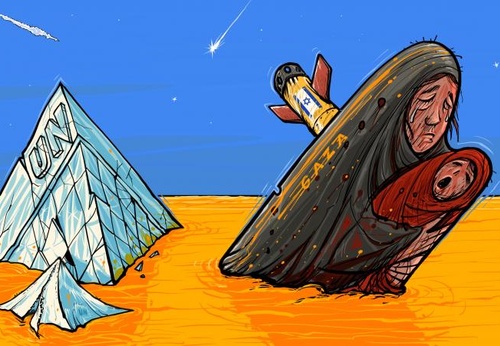
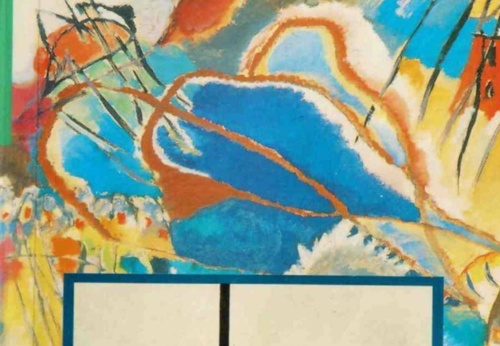

- November 27, 2025
Javier Muñoz - Argentina

- November 26, 2025
Frida Kahlo Breaks World Auction Record

- November 23, 2025
Latin American Abstract Painting: From …

- November 23, 2025
Pinta Miami Celebrates 19 Years of Lati…

- November 23, 2025
Upcoming Kahlo auction could fetch up t…

- November 20, 2025
An auction in Bogotá

- November 20, 2025
Klimt Breaks Record at Sotheby’s

- November 19, 2025
Pinta Miami celebrates its 19th edition…

- November 18, 2025
Artists and galleries from Brazil and L…

- November 17, 2025
"Painting in Mexico Today Is More Alive…

- November 17, 2025
Paris Photo Exhibits Iconic Collection …

- November 16, 2025
Art Exhibition in Bogotá

- November 15, 2025
Frida Kahlo's 'The Dream (The Bed)' Exp…

- November 12, 2025
Brescia, an exhibition of works by the …

- November 12, 2025
Uruguayan Artist Joaquín Torres García …

- November 11, 2025
Painting in Mexico Today Is More Alive …

- November 11, 2025
Oaxacan School Dominates Latin American…

- November 10, 2025
Artweek 2025 Celebrates a Decade of Art…

- November 10, 2025
Pop Brasil Arrives at Malba with Over 1…

- November 10, 2025
Adriana Cisneros Pays Tribute to Latin …

- November 10, 2025
Mira Art Fair 2025

- October 08, 2023
Illustrations reflect the brutal Israel…

- December 25, 2023
The jury statement of the Iran-Brazil F…

- March 21, 2024
The history of art in Palestine

- July 29, 2023
History of Caricature in Brazil

- September 01, 2023
Neural Filters in new photoshop 2023

- May 22, 2025
Brady Izquierdo’s Personal Exhibition O…

- April 20, 2024
Poignant Image of Grief Wins Mohammed S…

- June 29, 2024
Exhibition at Centro MariAntonia contra…

- October 21, 2023
Erick Meyenberg and Tania Ragasol at th…

- February 18, 2024
7 Ways to Understand What Visual Arts A…

- May 15, 2024
Eleven murals for Gaza painted across t…

- March 30, 2024
illustration websites in Latin America

- August 09, 2023
Venezuela mural expresses solidarity wi…

- March 14, 2024
museum of statue of van gogh

- March 15, 2024
museum of sculpture of Salvador Dali

- May 20, 2024
Latin American Festival of Performing A…

- May 25, 2025
Bordalo II to hold exhibition in Paris …

- October 23, 2023
Photos by José Luis Díaz of the march o…

- May 27, 2025
Works by Botero, Grau, and 80 other imp…

- December 01, 2023
Latin American International Graffiti F…

- May 15, 2024
Eleven murals for Gaza painted across t…

- February 18, 2024
7 Ways to Understand What Visual Arts A…

- January 02, 2025
13 commemorations that will mark the cu…

- October 17, 2023
The influence of Latin American artists…

- February 03, 2024
THE HISTORY OF NAIF ART

- October 08, 2023
Illustrations reflect the brutal Israel…

- July 02, 2024
One of the largest urban art galleries …

- November 17, 2023
Fernando Botero's work is booming after…

- July 29, 2023
Piracicaba International Humor Exhibiti…

- November 06, 2023
Heba Zagout: Palestinian artist murdere…

- December 25, 2023
The jury statement of the Iran-Brazil F…

- December 10, 2023
Sliman Mansour and Palestinian art on t…

- February 01, 2025
A maior exposição de Botero em Barcelona

- March 14, 2024
museum of statue of van gogh

- March 21, 2024
The history of art in Palestine

- July 20, 2024
First International Mail Art Biennial 2…

- April 20, 2024
Poignant Image of Grief Wins Mohammed S…

- October 30, 2023
Palestinian turns images of the Gaza co…

- September 01, 2023
Neural Filters in new photoshop 2023

- February 08, 2024

